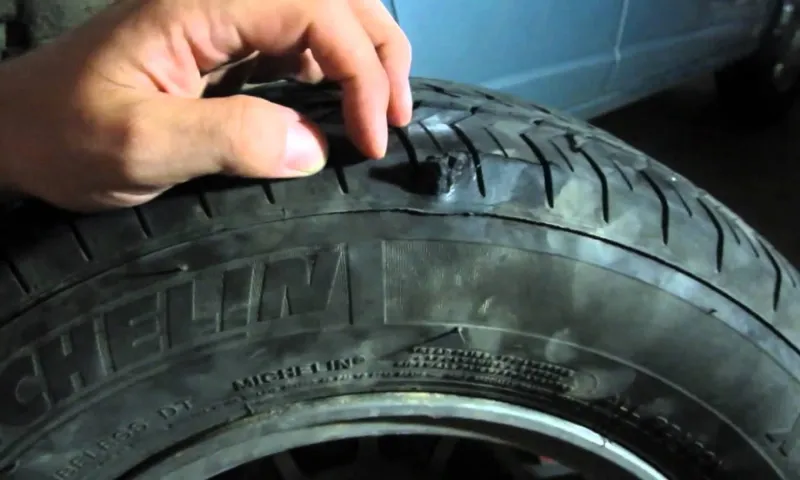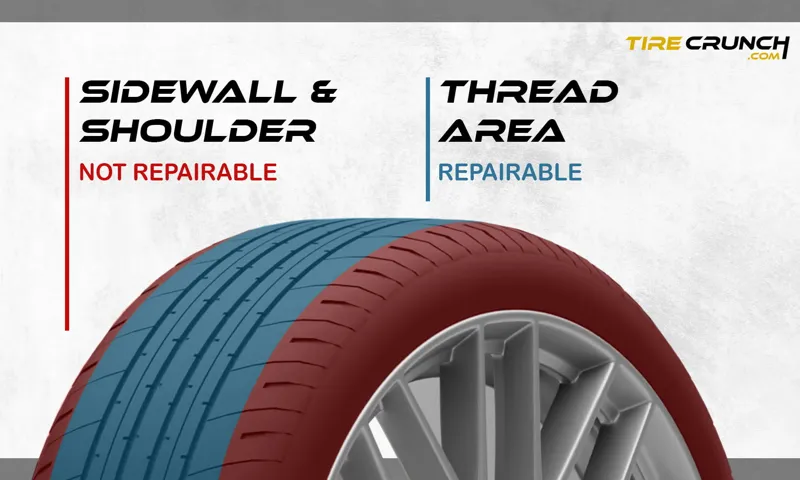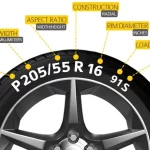Have you ever found yourself in a situation where you needed to plug a tire, but weren’t sure how close you could get to the sidewall? It’s a common concern for many drivers, and for good reason. The sidewall of a tire is its weakest point and damage in this area could lead to a blowout or other dangerous situations on the road. So, how close can you safely plug a tire to the sidewall? The answer is not straightforward and can vary depending on different factors.
In this blog post, we’ll explore the answer in-depth and provide you with some helpful tips to ensure your safety while on the road.
Table of Contents
Understanding Tire Sidewalls
If you’re wondering how close to the sidewall you can plug a tire, it’s important to understand the structure of tire sidewalls. The sidewall is the part of the tire that stretches from the bead (where the tire meets the wheel) to the shoulder (where the tread pattern begins). It’s designed to support the weight of the vehicle and absorb shock from the road.
However, the sidewall is also the thinnest part of the tire and is more susceptible to damage from impacts or punctures. So, how close to the sidewall can you plug a tire? Most professionals recommend avoiding plugging a tire within 1-2 inches of the sidewall or any existing punctures or damage. It’s safer to replace the tire or have it professionally repaired if the damage is too close to the sidewall.
Plugging a tire too close to the sidewall could compromise the structural integrity of the tire and increase the risk of a blowout or failure while driving. In summary, understanding the structure of tire sidewalls is important when considering plugging a tire. While it may be tempting to try to repair a tire to save money, it’s best to prioritize safety and replace the tire if the damage is too close to the sidewall or if there are existing punctures or damage.
Always consult with a professional if you’re unsure about whether or not a tire can be repaired or need a replacement.
Explaining Tire Terminology
Tire sidewalls are a crucial aspect of tire terminology that any driver should understand. They are the vertical parts of the tire that connect to the tire’s tread and are responsible for carrying the weight of the vehicle. The sidewall contains important information such as the tire size, speed rating, load index, and more, often shown in alphanumeric codes.
For example, the speed rating may be indicated by a letter, with “H” indicating a maximum speed of 130 miles per hour. It is also essential to note that the sidewall provides the driver with information such as the tire’s brand, model, and even its manufacturing location. This information comes in handy when replacing the tires and ensuring the vehicle maintains the correct tire specifications.
In summary, it is imperative to pay attention to the details on the sidewalls of your tires and understand what they mean to ensure a safe and comfortable ride on the road.

Sidewall Thickness Measurements
When it comes to understanding tire sidewalls, one important factor to consider is sidewall thickness measurements. This refers to the distance between the outer surface of the tire and the bottom of the rim. The thickness can vary depending on the type of tire and its intended use.
For example, tires designed for high-performance driving will generally have thinner sidewalls to provide better handling and responsiveness, whereas tires designed for off-road use may have thicker sidewalls to provide better protection against impacts and punctures. Additionally, sidewall thickness can have an impact on overall tire durability and longevity. It’s important to pay attention to these measurements when selecting tires for your vehicle to ensure that you choose the right type for your needs.
Safety Concerns
If you find yourself with a punctured tire, you may wonder how close to the sidewall you can safely plug it. Plugging a tire too close to the sidewall can be dangerous because it compromises the structural integrity of the tire. The recommended distance from the sidewall for tire repair is one inch, but it’s best to consult with a tire professional to ensure your safety.
If the puncture is too close to the sidewall, a professional may recommend replacing the tire altogether. Don’t take chances with your safety on the road; always prioritize getting an expert opinion on the matter. It’s better to be safe than sorry when it comes to tire repair.
Remember, ensuring your safety always starts with the tire you choose, so make sure to invest in high-quality tires to reduce the risk of damage and punctures.
Potential Risks of Plugging Near the Sidewall
When it comes to plugging a tire near the sidewall, there are a few potential risks to consider. First and foremost, it’s important to note that plugging a tire in this area may not be safe or effective. The sidewall is a critical part of the tire structure and is responsible for handling the weight of the vehicle and providing stability during turns.
By inserting a plug in this area, you are potentially compromising the tire’s structural integrity, which could lead to a blowout while driving. Additionally, if the plug is not installed correctly or if the tire is overinflated, it could cause the plug to pop out, resulting in a dangerous situation. It’s always best to consult with a professional tire technician to determine whether a sidewall plug is a safe and viable solution for your specific situation.
Safety should always come first when it comes to tire maintenance and repair.
Importance of Professional Inspection
As a homeowner, safety should be a top priority. You want to make sure that your family is protected from harm and that your property is secure. One way to ensure your safety is by getting a professional inspection.
A trained inspector can identify potential safety hazards and offer solutions to address them. For example, they can check your electrical wiring to ensure that it is up to code and not a fire hazard. They can also look for structural issues, like a compromised foundation or roofing, that could lead to injury or property damage during extreme weather events.
By investing in a professional inspection, you can have peace of mind knowing that your home is safe and secure for your family. Don’t wait until a safety concern arises, be proactive and get a professional inspection today.
Manufacturer Recommendations for Sidewall Plugging
When it comes to plugging sidewalls, manufacturers have specific recommendations to ensure safety on the road. One of the biggest concerns is the risk of a blowout caused by an improperly plugged sidewall. To avoid this, it’s important to use the right tools and techniques for the job.
For example, many manufacturers recommend using a patch plug instead of a string plug, as this provides a more secure seal. Additionally, it’s important to ensure that the plug is inserted straight into the hole and not at an angle, as this can weaken the sidewall and increase the risk of a blowout. Overall, following manufacturer recommendations for sidewall plugging is crucial to keep you and your vehicle safe on the road.
When to Replace a Tire
If you’re wondering how close to the sidewall you can plug a tire, the answer may vary depending on who you ask. Generally speaking, it’s recommended that you don’t plug a tire within 1 inch of the sidewall. This is because the sidewall is where the tire is most flexible, making it more prone to structural damage.
If there is a puncture within this area, it’s typically best to replace the tire altogether to ensure your safety on the road. Additionally, when considering whether to replace a tire, it’s important to keep an eye on its overall condition. Even if there is no visible damage, a tire that is worn or aging can compromise your vehicle’s handling and stability, potentially leading to a dangerous situation.
Be sure to inspect your tires regularly and have them replaced as needed to ensure optimal performance and safety.
Age and Wear Factors
Knowing when to replace your tires can be tricky, but there are two major factors to consider: age and wear. Even if a tire looks like it still has decent tread, it may have aged out and is no longer safe to use. Experts recommend replacing tires that are over six years old, as they can become brittle and prone to failure.
On the other hand, if your tires are showing signs of excessive wear like bald spots or uneven wear patterns, it’s time to replace them. It’s important to keep in mind that tire wear can vary depending on driving habits and conditions, but a good rule of thumb is to replace your tires when the tread depth reaches 2/32 of an inch. Keeping an eye on both age and wear can help you stay safe on the road and prolong the life of your tires.
Visual Indicators of Damage
When it comes to determining when to replace a tire, looking for visual indicators of damage is key. A worn-out tread is one of the most common signs that it’s time for a replacement. You can use the penny test by inserting a penny into the tread with Lincoln’s head upside down.
If you can see the top of Lincoln’s head, it’s time to replace the tire. Another visual indicator of damage is bulges or cracks on the sidewall of the tire. These can occur due to overloading or hitting curbs and potholes.
If you notice any signs of damage, it’s important to take action and replace the tire before it becomes a safety hazard on the road. So, keep an eye out for these visual indicators and stay safe on the road.
Conclusion
In conclusion, the question of how close to the sidewall you can plug a tire is like asking how close to the edge of a cliff can you dance. Sure, you might be able to get away with it for a little while, but eventually, it’s going to catch up with you. The best policy is to err on the side of caution and avoid plugging a tire too close to the sidewall.
After all, you don’t want to be left stranded on the side of the road with a flat tire and a bruised ego.”
FAQs
What is a sidewall in a tire?
The sidewall of a tire is the area between the tread and the bead, which forms the outer part of the tire and helps maintain its shape.
Can you plug a tire close to the sidewall?
It is not recommended to plug a tire close to the sidewall as it can compromise the structural integrity of the tire, leading to potential blowouts or accidents.
How far away from the sidewall should a tire be plugged?
Experts recommend that any puncture in a tire should be at least 1-2 inches away from the sidewall to ensure that the tire’s structural integrity is not compromised.
What are the dangers of plugging a tire too close to the sidewall?
Plugging a tire too close to the sidewall can lead to the ply cords being cut or damaged, causing the tire’s strength to weaken. This can result in sudden blowouts or loss of control of the vehicle.
Can a tire with a puncture close to the sidewall be repaired?
In most cases, tire repair shops will not repair a puncture close to the sidewall as this can pose a safety risk. It is best to replace the tire to avoid any potential danger on the road.
How can you prevent sidewall damage on tires?
Proper tire maintenance, including checking air pressure regularly, avoiding hitting curbs or obstacles on the road, and ensuring that the tires are aligned correctly, can help prevent sidewall damage on tires.
What should you do if you notice sidewall damage on a tire?
If you notice sidewall damage on a tire, it is best to have it inspected by a professional as soon as possible. Continuing to drive on a damaged tire can severely compromise your safety on the road.




